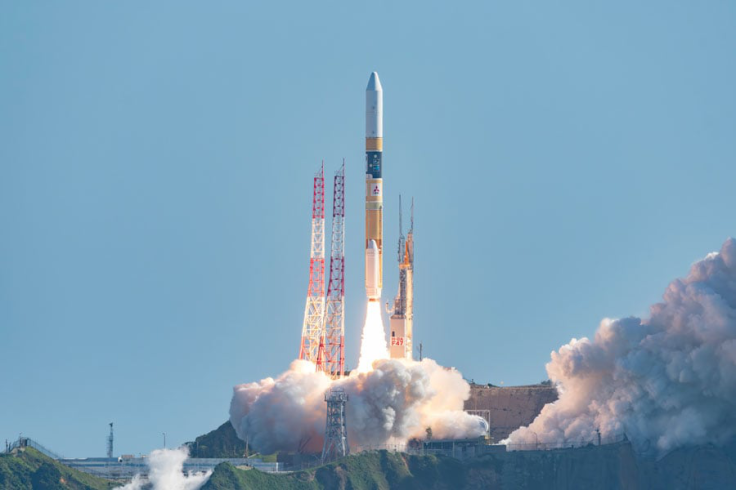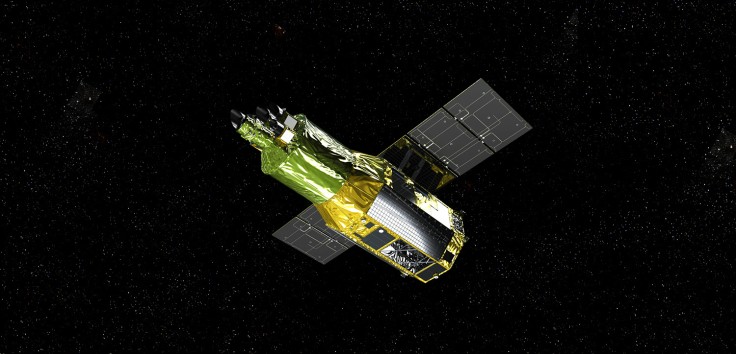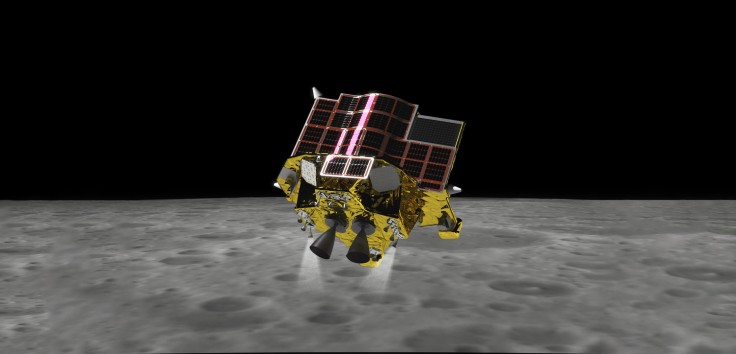Japan's lunar mission is officially Moon-bound.
Mitsubishi Heavy Industries has announced it has successfully launched its H-IIA Launch Vehicle No. 47 rocket to send two spacecraft to the Moon to complete their respective missions.
The Japan Aerospace Exploration Agency (JAXA) expects the spacecrafts within the rocket will safely land on the Moon a few months from now, though exactly when is still unknown.

It's A Liftoff!
Mitsubishi Heavy Industries mentioned in its announcement that the launch and flight of its rocket proceeded nominally. According to the company, JAXA's X-Ray Imaging and Spectroscopy Mission (XRISM) separated from the rocket approximately 14 minutes and 9 seconds after launch, as planned.
The other spacecraft the rocket was carrying, the Smart Lander for Investigating Moon (SLIM) lunar lander, successfully broke off from the company's rocket on time - around 47 minutes and 33 seconds after launch. Should everything go as planned between now and the spacecrafts' arrival at the Moon, Japan will attempt to soft-land SLIM on the lunar surface a few months from now - a pinpoint touchdown that will pave the way for even more ambitious feats in the future, per Space.com.
Japan, JAXA, and Mitsubishi Heavy Industries couldn't be any happier with the launching of their lunar mission. You may recall that Mitsubishi Heavy Industries delayed the mission's Aug. 28 launch to a later date due to bad weather.
Read More : TikTok Prepares to Improve Messaging Features
At the time, the company found that the upper winds in the atmosphere were not meeting launch standards As such, Mitsubishi Heavy Industries had no choice but to stop the launch sequence for 30 mins. before the planned 9:26 AM local time liftoff.
The decision to postpone the launch was difficult and "very painful" for company leadership; they felt it was necessary due to the need for careful judgment, per Kyodo News.
Nevertheless, the launch's success could mean that Japan will become the fifth country to reach the Moon after India, whose Chandrayaan-3 spacecraft successfully soft landed on the Moon's south pole in late August. The other three were the US, the former Soviet Union, and China.
XRISM And SLIM

Japan's XRISM spacecraft is a replacement for the Hitomi space science observatory, which the country lost after an attitude control failure a month after its 2016 launch broke the observatory apart, per Space News. The spacecraft aims to collect high spectral resolution data of hot plasma clouds enveloping galaxies and extremely energetic cosmic phenomena, such as supernovae and accreting supermassive black holes.
To do so, the spacecraft will rely on its two instruments, the "Resolve" and "Xtend," which will X-ray spectroscopy cooled close to absolute zero by liquid helium and image the cosmos with X-ray vision, respectively.

Meanwhile, the SLIM lunar lander will act as a demonstration of navigation systems for pinpoint lunar landings in rugged lunar terrain. The lunar lander won't take a direct route to the Moon, though.
Once it arrives at the Moon's orbit, it will execute a lunar transfer orbit burn, make a flyby, and then head into a wide loop away from the Earth-moon system. It will then return to the Moon to enter its orbit in around four months' time.
This route lets SLIM use a smaller burn to enter its orbit, saving propellant and mass for a more controlled landing. Once these maneuvers are done, the lunar lander will orbit the Moon for a month before it makes its 20-minute descent and landing attempt.
JAXA allegedly wants to demonstrate a lightweight landing capability with high accuracy using SLIM.
Related Article : Japan Delays Lunar Mission Due to Bad Weather









